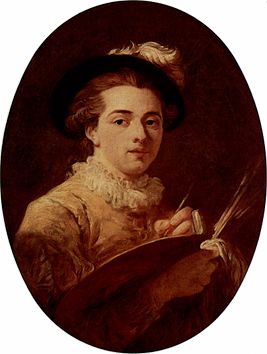

Playful and frivolous, filled with joy and love of life, executed elegantly and elegantly by the great rococo master Jean-Honoré Fragonard, these works stand out from the variety of pastoral scenes with a subtle pattern and gentle color. He is an outstanding, brilliant painter of his time – a gallant eighteenth century.
Jean-Honore Fragonard was born April 5, 1732 in the family of the glover. As a young man, the future artist finds himself in the workshop of the famous François Boucher. Education in those years passed through an uncomplicated system – the student copied the works of the teacher, thereby improving his skills. Fragonard was particularly diligent and persistent, customers did not distinguish copies made by him, from the originals. The young man also copied the works of old masters, especially enthusiastically – Rembrandt. In 1752, Boucher advised the young painter to participate in an academic competition, the victory in which allowed for several years to become a “pensioner” of the French Academy in Rome. The competition accepted historical painting, which at that time was not alien to Fragonar – “Rest on the way to Egypt”, “Adoration of the Shepherds”, “Christ washing the feet of the apostles” (a canvas executed by the artist before the trip to Italy, and still adorns altar in his native Grasse).
However, the historical themes did not particularly fascinate Fragonard, he switched to writing pastors and scenes that are very characteristic for the Rococo era. His works are full of sensuality and lightness, they convey the joy of being and the boundless youthful thirst for life. Fine black and white effects are combined with the refinement of color and the softness of the composition.
Fragonard is a master of a fleeting drawing from nature, the characters of his paintings are natural, passionate, full of living human emotions. The nature is also characteristic of the portraits of the artist, Denis Diderot was captured by Fragonard at the moment of illumination, the philosopher, tearing himself away from reading, directs his inspired look.
By the end of the eighteenth century, the “lightness” was replaced by the severity and patheticism of classicism. The outbreak of the revolution forced the artist to move to Grasse, but after a very short time, Fragonard returned to Paris. In January 1794 he was elected a member of the Museum Commission and began to work on the formation of the Louvre collection.
The artist died on August 22, 1806.